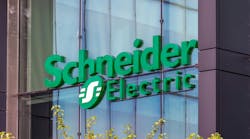Latest from Industry
The news this week that GE had spun off its energy businesses into a separate company named Vernova (Ticker symbol: GEV) highlights its portfolio of electric power products and software for emerging grid electrification opportunities, wind power, power turbines and modular nuclear power. At the same time, GE also spun off its Aerospace business, which makes jet engines and provides services for the aviation market. The company spun off GE Healthcare as a separate company last year.
Vernova won’t look much like the GE that many electrical distributors knew. Over the past few years, the GE parent company spun off its legacy commercial/industrial and residential lighting businesses in separate deals to Savant Systems (2020) and what became Current (2018). In 2017, ABB bought GE’s lower voltage circuit protection products for residential and light commercial applications as well as its industrial electrical products. And in 2006, Rexel bought the company’s GE Supply distribution arm and renamed it Gexpro.
But through all this occasionally gut-wrenching change, and GE’s departure from not only these electrical product groups but also its major business units focusing on the financial (GE Capital units sold between 2013 and 2021) and entertainment industries (NBCUniversal 2013), healthcare (2023), the company doubled down on its Power business, which now includes gas turbines, wind turbines, modular nuclear power units and software and other products intended to recast the nation’s electrical grid.
You could say Vernova is like GE’s old electrical business, in that their products both harness electricity. Vernova does build on GE’s legacy electrical products, but its market focus is on a much grander scale, and with a 21st century digital twist. Vernova is focused on what analysts are calling a mega billion “supercycle” that could change how the world produces, distributes and stores electricity.
Vernova hits the market with well over $20 billion in revenues; expected positive free cash flow in 2024; more than 80,000 employees across more than 100 countries; an installed base of over 7,000 gas turbines; approximately 55,000 wind turbines; and what it called in a press release “leading-edge electrification technology.” The release also said that the businesses under the new GE Vernova banner currently help generate approximately 30% of the world’s electricity.
The company estimates 2024 revenues will range between $24 billion and $25 billion, and said that these revenues will come primarily from three key market segments: Power ($17.43 billion in 2023 revenue and $73 billion in backlog); Wind ($9.8 billion in 2023 revenue and a $27 billion backlog); and Electrification ($6.4 billion in 2023 revenue and a $16 billion backlog). The Power unit includes gas turbines, modular nuclear units and products for the steam and hydro markets; the Wind unit draws revenues from onshore and offshore turbines and blades; and the Electrification covers the transmission, distribution, conversion, storage and what it calls the “digital orchestration” of electricity.
Vernova has some interesting nuclear power projects underway, where it’s jointly investing $500 million in Small Modular Reactors (SMRs) with the Tennessee Valley Authority, Ontario Power Generation and Synthos Green Energy. Over the next 10 years, the company believes it can scale its SMR business to generate $2 billion in annual revenues.
GE has for many years been a leader in the wind market, and it’s already providing its Haliade offshore wind turbines for some of the wind farms starting to be built off the U.S. East Coast. Offshore is currently the more turbulent segment of the wind market as some developers have pulled back on their planned investments in wind farms in U.S. domestic waters.










